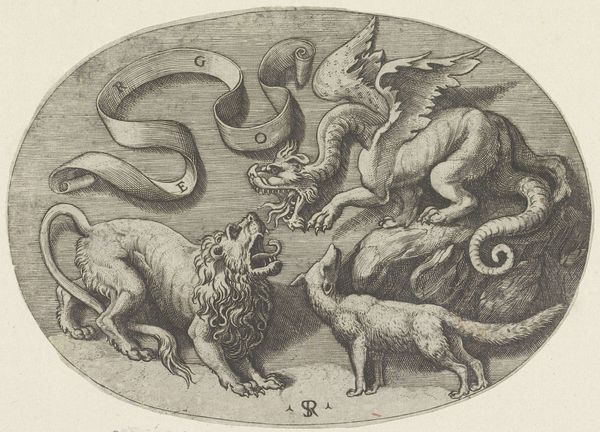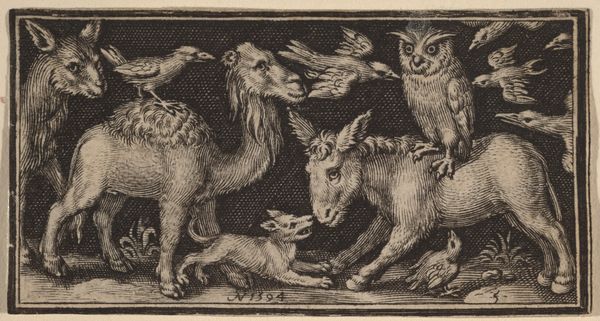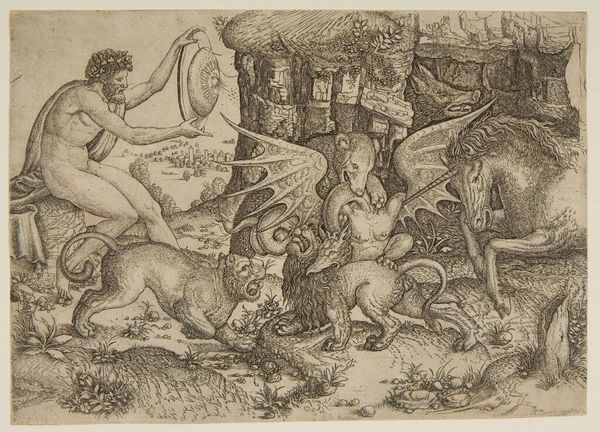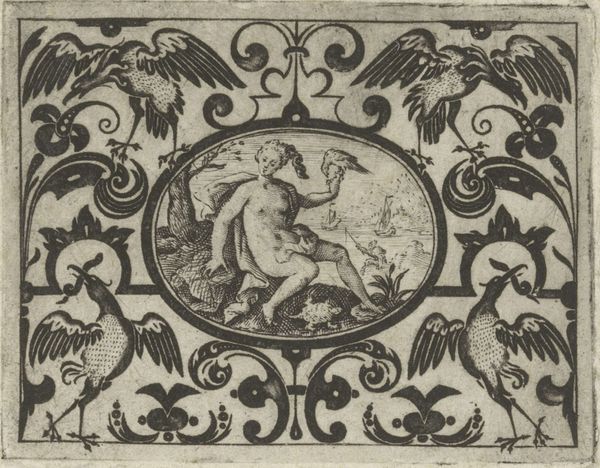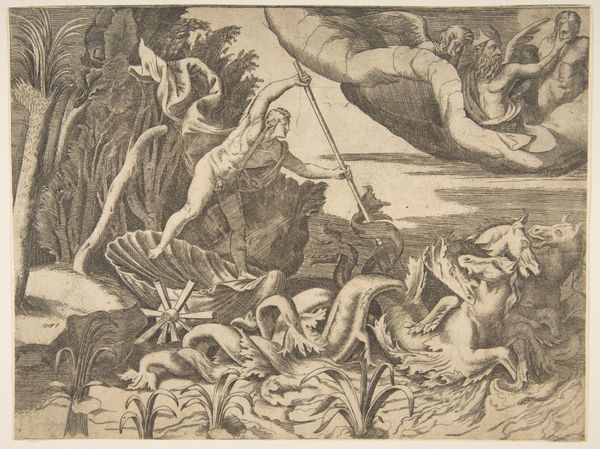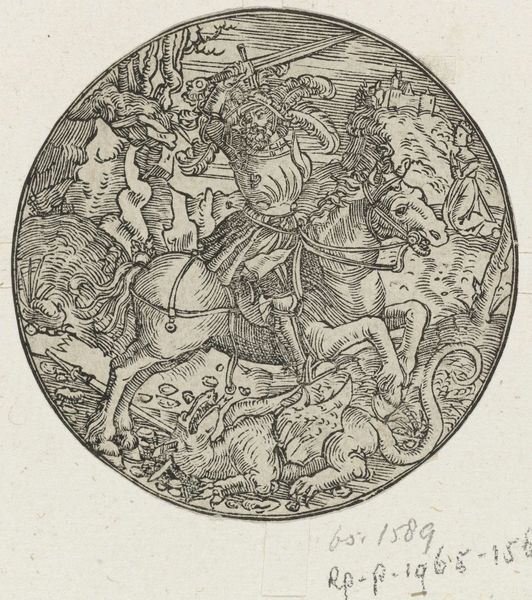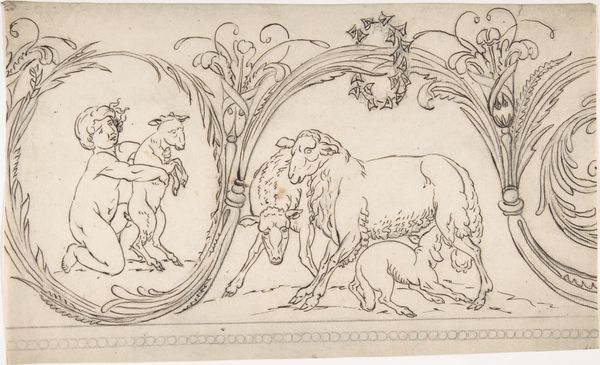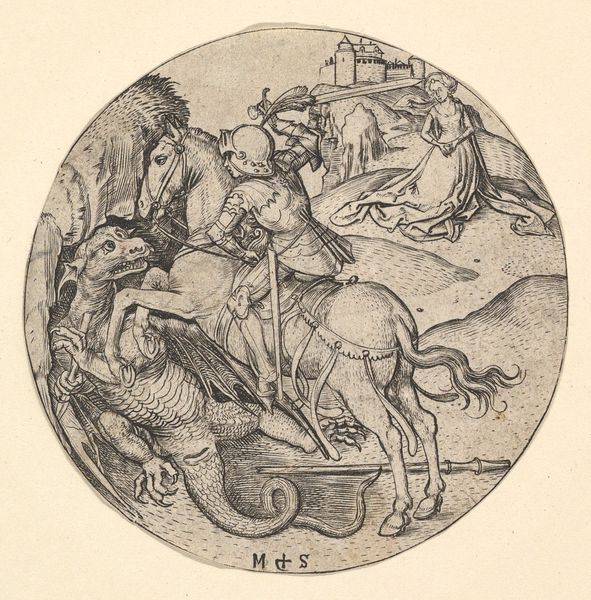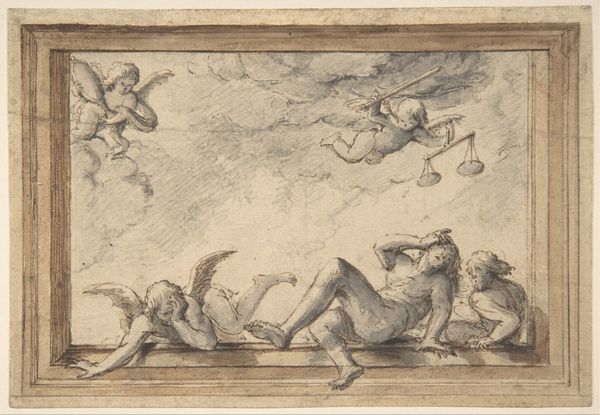
A lion, dragon and fox fighting each other, boats on the sea in the background, an oval composition 1515 - 1600
0:00
0:00
drawing, print, engraving
#
drawing
#
ink drawing
# print
#
landscape
#
figuration
#
11_renaissance
#
pencil drawing
#
engraving
Dimensions: Sheet (Trimmed to image): 4 5/8 × 6 11/16 in. (11.8 × 17 cm)
Copyright: Public Domain
Curator: Here we have an engraving from the Renaissance, dating somewhere between 1515 and 1600. It depicts "A lion, dragon and fox fighting each other, boats on the sea in the background, an oval composition." It's currently part of the collection at the Metropolitan Museum of Art. Editor: Wow, what a bizarre menagerie! I'm immediately drawn in by the fantastical tension – that lion's roar practically jumps out of the engraving! And what’s the fox even doing there? Curator: I think examining the socio-economic context surrounding printmaking at this time helps unpack some of this. Engravings like these were becoming more popular and affordable, playing a crucial role in circulating imagery and ideas. Consider how the relatively cheap medium helped bring exotic subjects into domestic settings. Editor: You know, there’s something slightly unsettling about this clash. Like a fable illustrating some chaotic moral – like unchecked power corrupts! What materials were used to produce it, exactly? I'm curious about the technical process. Curator: The artwork is an ink drawing transferred to a copper plate, most likely, then etched or engraved to create the design. The material conditions dictated that multiple impressions could then be made relatively quickly, satisfying the appetite of the era's art consumers. We should keep in mind this reproductive aspect when studying engravings as such! Editor: I’m curious about that little seascape way in the back. The details in the distance are astonishing. Imagine this whole scene as someone’s wild dream. That kind of imagery does something to the modern imagination; an early precursor for modern allegories, or even surrealist practices. Curator: True, but remember that workshops at the time standardized such iconographic forms, including for example, this standard menagerie configuration! But yes, the personal aspect that is imbued in this artwork still has meaning to our eyes today, it seems, in some ways, isn’t that so interesting? Editor: Indeed. It really underscores the fact that the artwork's staying power resides not only in the materials, the process, or even the art historical framework you have in place to explain it, but also in this really visceral thing that lives outside words. Curator: An insightful end. Yes, this strange assembly, viewed in the correct framework of material production of its time, also carries enduring aesthetic magnetism, one we all participate in even to this day.
Comments
No comments
Be the first to comment and join the conversation on the ultimate creative platform.


